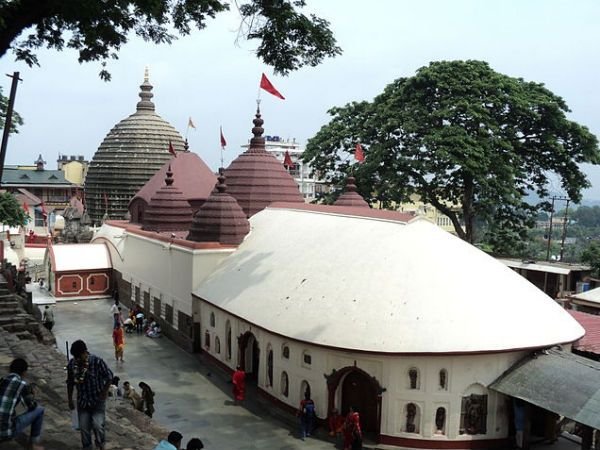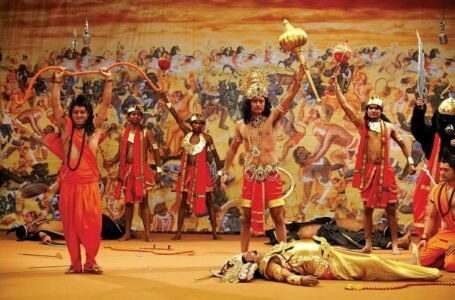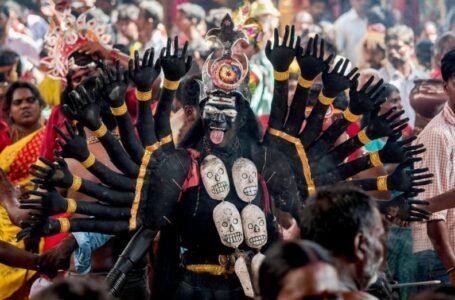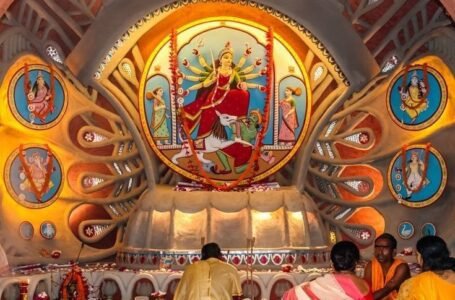Tantric Architecture: Here, the mysterious energies are woven into buildings

-Muskaan
Unique architecture has remained an attention-grabbing centre since its inception. The rare shapes, decoration, carvings, precious stones, and artwork are the elements that provide a different identity and style to an architecture, and bring popularity to it. Architectures like Mughal, Dravid, and Vesara are famous for their look, decoration, and amazing blend. Similarly, tantric architecture is prominent for its mysterious tantras woven into buildings.
The word ‘Tantric’ depicts spiritualism. In the Sanskrit language, it means ‘woven together’. In its purest form, Tantric is the use of mantras, rituals, yoga, and meditation for mental relaxation. It is related to and widely used in connection with the principles of religions like Buddhism and Hinduism. The Tantric principles are considered sacred in all aspects, whether used in the context of religion, traditions, architecture.
Tantric Architecture:
Tantric Architecture is deeply rooted in tantric philosophy. It is a sacred architectural design system of ancient India that is beyond just aesthetics. It is a beautiful blend of tantric energies, spiritualism, and physical structure. When temples are designed in a particular style with sacred mantras woven into their architecture, they become masterpieces of Tantric architecture. The temples designed in this style channel spiritual energies and awaken the inner self.
Roots:
The Tantric architecture flourished from the broader ancient Indian Tantric traditions. The exact time of the beginning of the Tantric traditions is still a mystery; however, it is speculated to be rooted around the 5th – 9th centuries CE. The mention of Tantric traditions can be found in the Hindu scriptures like the Vedas, particularly the Atharvaveda. It was the time when new kingdoms were rising, and Goddess worship and temple construction were at their peak in ancient India.
The Tantric traditions involve symbols, rituals, mantras, and mathematical calculations. Tantric architecture is a reflection of all this, combined with geometric patterns (mandalas), and symbolic and visual representation of deities. In this architecture, there is a designed space for everything involving rituals, practices, offerings, and visualisation. These Tantric traditions and architecture are prominent in South East Asian countries like Nepal, Bhutan, China, Indonesia, Cambodia, etc.
Geometric Patterns:
Geometric patterns are a significant part of Tantric architecture. Mathematical calculations are forming geometric shapes in the buildings. These sacred geometric shapes representing the universe are derived from yantras and mandalas (geometric diagrams). There is a divine centre point that symbolises the origin of creation. It is the focal point of all existence, which brings a harmonious environment to the temples.
The structured and cosmological placement of doorways, pathways, and altars is prioritised in Tantric architecture. It is carefully and strategically designed to bring ritual harmony and facilitate the movement of spiritual energy. All the elements are specifically placed according to their cosmic roles. The centre space is reserved for the main deity. Even the placement of gardens, fountains, and ponds is according to the cosmic principles. The smaller or peripheral shrines are located around the temples. The material is also carefully chosen. There are carvings, mythical creatures on the pillars, walls, and doors composed of clay, wood, and precious stones.
Symbolism:
The symbols have a unique and divine place in Tantric architecture. The prominent symbols of this architecture style are lines, circles, triangles, squares, vajra, lotus, deities, and unique geometric patterns. These symbols convey deeper spiritual meanings and channel self-introspection energies in the temples. The deities’ symbols represent their significant role in the tantric traditions, the vajra represents strength and power, the lotus represents enlightenment and purity, and lines represent the flow of energy.
Cultural and Religious Influence:
The South Asian culture and religions are highly influenced by Tantric architecture. The Tantric traditions are incorporated into religions like Hinduism, Buddhism, Shaivism, and Shaktism, which can later be noticed in their architecture. The Tantric tradition is the interconnectedness of the human body with the cosmic energies. Through the Hindu and Buddhist architecture and the artistic practices, this interconnection can be deeply felt through architecture channelling energies.
The interplay of male and female energies in Tantric traditions is reflected in many Indian architectures, such as temples in Odisha. The chakras (energy movement) in the human body, a significant part of Tantric culture, are also represented in some temples in West Bengal. In short, tantric temples are not just a piece of aesthetic architecture; instead, every inch of the Tantric architecture is the representation of cosmic energies, spiritualism, magical interconnection of male and female bodies that facilitates inner awakening.
Prominent Tantric architecture:
Yogini Temples: Located in Odisha, Yogini temples depict female deities’ sculptures with an open-air design. The free flow of energies and the five elements (earth, water, air, fire, space) is the idea behind the design of these marvellous temples. It is also called open sky design.
Kamakhya Temple: The Kamakhya Temple of Assam is a magnificent example of tantric architecture where the feminine divine and fertility are worshipped. Located on Nilachal hills, this temple is famous for female tantric energies, where the most worshipped and sacred part of the architecture is yoni (female genitalia), which is a natural stone formation. Goddess Kamakhya (menstruating deity) is worshipped in this temple, and this tantric architecture is a blend of North Indian and Mughal architecture styles.
Khajuraho Temples: Built during the Chandela dynasty in 950-1050 AD, these temples, known for their erotic sculptures, are located in Madhya Pradesh. The Chausath Yogini temple is considered to be the oldest temple among the Khajuraho temples. The walls of the temple are full of love-making postures, depicting human sexuality and the awakening of sexual energies. With its special place in UNESCO World Heritage sites, this Hindu temple is built in Nagara style architecture.
Borobudur: This temple, located in Indonesia, is a piece of Tantric Buddhist architecture. Built during the Sailendra Dynasty, this 9th-century monument is a massive representation of various realms of existence. This three-dimensional mandala has multiple level terraces reflecting the use of Tantric concepts in Buddhism.
Bayon Temple: This Cambodian temple is prominent for its unique Buddhist Tantric style of architecture. The temple’s intricate carvings include smiling stone faces, and the design is based on yantras representing the universe. The temple depicting both historical and religious scenes is believed to have been built by King Jayavarman VII in the late 12th and early 13th century. In the absence of walls, the temple honours the deities from both Buddhism and Brahmanism.
Conclusion:
The Tantric style of architecture is an asset for South East Asia, especially India. Though a significant amount of study and facts are on the record for human understanding of this fantastic architectural style, yet Tantric studies and architecture are a mysterious ocean hiding numerous mysteries about the cosmic energies, spiritualism, mandalas, yantras and their weaving into the architecture marvels.


